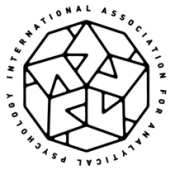
Vehicle of Psychic Change
Emilija Kiehl
The transcendent function is one of the core concepts of Jung’s model of the psyche. It is an attempt to explain the phenomenon of psychic change and development. The transcendent function enables a transition from one psychological attitude to another through a dialectical process of integrating the psyche’s conscious and unconscious contents into a third position, which constitutes a new step in the evolution of personality. The process of psychological development that Jung termed individuation – becoming oneself – involves coming to terms with one’s unconscious. The aim of analysis of the unconscious is the development of the transcendent function, which carries this process through and creates a symbol, where consciousness and the unconscious meet. “The way of the transcendent function is an individual destiny,” writes Jung (CW7, par 369).
Our consciousness and the unconscious are in a relationship of dynamic opposition, which can be conflictual or creative. When creative, the resulting psychic tension sets in motion “the remarkable capacity for change of the human soul” (Jung, CW7, par. 360), which fosters the unfolding of the self and its differentiation from the collective. In other words, the transcendent function provides the individual line of development by facilitating creative solutions to the tension between the collective and personal conscious and the collective and personal unconscious contents. However, difficult early or traumatic experiences may impede the development or the activation of the transcendent function and stall the process of psychological growth. In analysis, the quality of the analytic relationship and the analyst’s capacity for reverie are the essential ingredients in the creation of the third area, where the analyst uses their own transcendent function to mediate the potential for its development in the patient.
Aware that the idea that the psyche possesses a capacity to transcend the realm of personal subjectivity could attract criticism from the reductionist quarters of the psychoanalytic movement, in his 1916 essay, Jung writes:
“There is nothing mysterious or metaphysical about the term ‘transcendent function’. It means a psychological function comparable in its own way to the mathematical function of the same name, which is a function of real and imaginary numbers. The psychological ‘transcendent function’ arises from the union of the conscious and unconscious contents” (CW 8, par. 131).
The ego (in Jung’s model the center of consciousness), tends to keep the conscious and the unconscious contents of the psyche apart so as to avoid the conflict that their dynamically opposing movements may create, thereby creating a psychological standstill. However,
“Since life cannot tolerate a standstill, a damming up of vital anergy results, and this would lead to an insupportable condition did not the tension of the opposites produce a new, uniting function that transcends them” (Jung, 1926).
Jung saw the transcendent function also as a method whereby “everything that happens at the behest of nature, unconsciously and spontaneously, is deliberately summoned forth and integrated into the conscious mind and its outlook expressed in the transcendent function” (CW7, p. 80).
The development of the personality depends on the ego’s capacity to endure this tension so that some integration of the psyche’s conscious and unconscious contents becomes possible. In the process, both undergo a degree of transformation. The ego has an opportunity for a psychological experience of a different order, which is in the larger dimension of the self – for Jung, the ordering principle of the whole personality. Such encounters between self and ego can bring forth renewal in their dynamic relationship, fostering individuation and strengthening the ego. They are also a test for the ego, thus exposed to the danger of disintegration or psychosis (ego’s identification with the self). Therefore, from the start, a sufficient degree of ego strength is necessary to sustain the intensity of these encounters and for the ego’s participation in the operation of the transcendent function. It could be said that the transcendent function guided and enabled Jung’s ego to be the witness in his explorations of his inner world. Hence, what might have led to a psychotic breakdown resulted in a work of tremendous creativity, the Red Book, where we can find pre-figurations of many of the founding concepts of analytical psychology.
As the engine of psychic change, the transcendent function does not operate only in the realm of tension of the opposites but also in the very yearning within the self’s drive towards wholeness, where conscious and unconscious elements of the psyche are in a relationship of complementarity and compensation. Here the transcendent function mediates and facilitates a fusion between the inner and outer experiences, their real and imaginary, and rational and irrational aspects so that they can be assimilated into the personality. 1
For Marie Louise Von Franz, “the right kind of imagination” is necessary for the activation of the transcendent function. Similarly, Warren Colman, in his paper, “Imagination and the Imaginary” (2006), looks at the transcend function in the context of ego’s attitude to reality, its capacity to tolerate the absence of what is desired and “acknowledge the gap between what is imagined and what is actually present in the material world” (p. 22). He argues that only real imagination (as opposed to imaginary fantasy) leads to symbol formation through the operation of the transcendent function between the opposites of presence and absence. In contrast to real or symbolic imagination, the ‘imaginary’ is a defensive misuse of imagination to deny the presence of absence, thus not leading to the activation of the transcendent function and psychological growth.
In early development, the right kind of imagination, or the capacity to symbolize in an infant, arises within the space created in the mother-infant relationship by the maternal capacity for reverie, i. e., the maternal transcendent function.
The archetypal root of the transcendent function stems from our primary instinct for connection and relatedness. The disparate objects of our internal and external worlds and the different levels of our experience of abiding in both these worlds are connected, bridged by the transcendent function.
Jung wrote his essay, The Transcendent Function, in 1916, soon after the break up with Freud but did not publish it until 1958 in a revised version. The concept continues to be revised and to evolve through contemporary clinical and theoretical thinking. An entire triennial Congress
1 For the “mechanics” of the transcendent function, see Miller, J. (2004), p. 47.
of Analytical Psychology, held in Chicago in 1992, was dedicated to exploring the transcendent function in a wealth of analytical experience of the time.
In today’s changing world, particularly since the onset of the global coronavirus pandemic, there has been a sense of urgency for re-thinking our collective attitude to life, individual and social. The concept of the transcendent function may contribute to our search for a new modus vivendi in the rising awareness of the destructive aspects of our collective shadow. Whether the future will bring the realisation of our hopes or of our fears for what is to come will depend on our ability to evolve from the limiting domain of the ego and its drive for power and domination into the transcendent realm of the Self, wherefrom our drive for empathic connection emanates.
“The Transcendent function is realized synchronistically when there is a shift away from a desire to know and control towards a desire to relate and understand.” (Beebe 199, p. 118).
References:
Beebe, J., (1993) Response to: Another Degree of Complexity by Anya Agnel. In Proceedings of the XII Int. Congress for Analytical Psychology Chicago 1992. Einsiedeln: Daimon Verlag.
Colman, W (2006) Imagination and the Imaginary. Journal of Analytical Psychology 51; 21-41. Jung, C. G. (1926) Psychological Types. Kegan Paul, Trench, Tubner & Co., LTD.
Jung, C. G. (1960/2002). CW 8. Routledge: London. Jung, C. G. (1966/199). CW 7. Routledge: London. Jung, C. G. (2011). The Red Book. WW Norton.

Emilija Kiehl MSc., is Vice President of IAAP and works in private practice in London. She is a training analyst and former Chair of the British Jungian Analytic Association and senior member of the British Psychotherapy Foundation. She is on the board of the Journal of Analytical Psychology. She lectures, teaches and supervises in the UK and abroad.
Miller, J. (2004) The Transcendent Function. State University of New York Press.
1 This image may be a depiction of the resolution of the problem of opposites in the reconciling symbol and a new conscious attitude.
Reprinted from the Red Book by C. G. Jung. Copyright © 2009 by The Foundation of the Works of C. G. Jung. With permission of the publisher, W. W. Norton & Company, Inc. All rights reserved.

